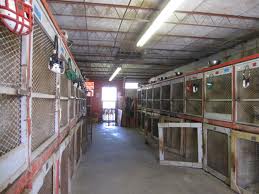 When my daughter was fifteen, she came home with her head shaved. When we asked her why she did it, she said, “I was just tired of the whole hair thing.”
When my daughter was fifteen, she came home with her head shaved. When we asked her why she did it, she said, “I was just tired of the whole hair thing.”
Ever feel this way as a pet owner? I know that when I was selecting the breeds of our current pets, I passed on the beautiful collie and the sweet looking ragdoll, because I knew I’d never find the time for all…that…brushing.
But for those that can’t resist the pull of a long haired pet, there’s always the groomer, right? Sure! Except, turns out choosing a groomer is just as hard as finding yourself that perfect hairdresser. We’ve read dozens of bad grooming stories all over the internet. We also talked to some groomers. Then we compiled this list of things to know and look for if you’re thinking about trusting your fur baby to a grooming professional.
1.) Call for an appointment. Don’t just show up in a hurry. (In a really good salon, people schedule appointments. Period.)
2.) Be polite. I know, most of you would never think of being rude. But this happens to groomers so often, it made the list.
3.) Let them know on the phone about any health issues your pet has: recent surgeries, allergies, etc. I work in a medical office and I can tell you that you’d be surprised at how important these things can be, even if you don’t think they can possibly affect anything.
4.) Don’t lie. Tell them if the pet has fleas. They can deal with it, but do them the courtesy of NOT infesting their facility or other pets.
5.) Tell them if your dog has special quirks: doesn’t like its nails or ears trimmed, is afraid of the dryer, etc.
6.) Advise them of recent home environment changes or stresses—sick family members, additions to the family, etc. Pets are very sensitive to changes in their families, and alerting groomers ahead of time can save them getting a nasty bite if the pet is just stressed.
7.) Be clear and honest about what you want. The number one complaint in bad grooming stories is the pet owner did not get what they asked for. This can happen for many reasons: instructions passing through many people before getting to the actual groomer, pet owners asking for harmful things (such as a groomer friend asked to shave a dog down in the blasting heat of summer, risking him being sunburned), or groomers who have had SO many cases of people NOT really wanting what they ask for that they’re actually afraid to follow instructions!
8.) Always leave a phone number where you can be reached right away. Groomers rarely need to use this, but if they do, you want to be available.
9.) Listen to the groomer’s advice after the visit, and ask questions about home grooming.
Also be aware that…
Most states require rabies vaccines by law, prior to grooming—and some salons require proof of even more vaccines. On every call, you should check to make sure they have your dog’s most recent records on file. Salons will turn you away when you arrive if the pet’s documents are not in order.
Certain issues increase price, such as:
1.) Matting (severe matting can only be removed by a vet)
2.) Fleas
3.) Bad behavior
 What you can do at home, prior to your pet’s grooming visit:
What you can do at home, prior to your pet’s grooming visit:
Prevent matting—you cannot brush your long haired pet too often. Good places:
- Behind the ears
- The rear end
- Under the collar
- The butt
- The legs
- Anywhere the hair is rubbed together or gets petted often
To prevent behavior problems:
- Touch their feet and nails
- Touch their undercarriage and legs
- Expose them to a dryer/vaccuum
- Touch them with the handle of an electric toothbrush or razor (vibration)
- Bring them for grooming more often, even if just for a quick nail trim.
If you sometimes groom your pet at home, try clipping a nail and then feeding your pet a treat. Clip another nail or two and feed another treat. In this way, pets learn that grooming is just part of your love for them.
A word about biting: Tell the groomer if your pet bites.
And don’t think your pet won’t. I can tell you from experience that some of ours have. Behaviorists know that being physically restrained (even in human children) activates the emotional fear and rage system in most animals. It just does. If your groomer is bitten, they are required by law to report your pet. If you let them know in advance this could happen or you’re not sure, they can help prevent it.
Why you are not allowed “back there”:
Many salons now offer a window where you can watch the grooming happen. However, groomers do not encourage owners being in the room with them because pets (much like human children, I’m told by child care experts) behave differently when owners are present. Our Brittany, Castle, for instance, cries aloud in the presence of my husband when the vet walks into the room to give her a shot, but before the woman has even touched her.
And, one way that salons keep the cost of grooming reasonable is by not paying for insurance so you can go “back there”. Pets are often worked by several groomers at once in a rotation, depending on the stage of their visit. Add an owner to this orderly mix and you can imagine the problems that could ensue.
 So—what ever happened about my daughter’s hair? It grew back, of course. Despite all of this, you could still have a bad grooming visit. But guess what? Hair grows back. It always grows back.
So—what ever happened about my daughter’s hair? It grew back, of course. Despite all of this, you could still have a bad grooming visit. But guess what? Hair grows back. It always grows back.
![]() Joy Jones is a syndicated columnist living with her husband Dave in Anderson, Ohio. When not working on Your Pet Space, she writes a metaphysical column called The Midwestern Buddhist as well as urban fantasy and humor. You can e-mail her at joy@yourpetspace.info as well as follow her on Facebook or Twitter.
Joy Jones is a syndicated columnist living with her husband Dave in Anderson, Ohio. When not working on Your Pet Space, she writes a metaphysical column called The Midwestern Buddhist as well as urban fantasy and humor. You can e-mail her at joy@yourpetspace.info as well as follow her on Facebook or Twitter.


